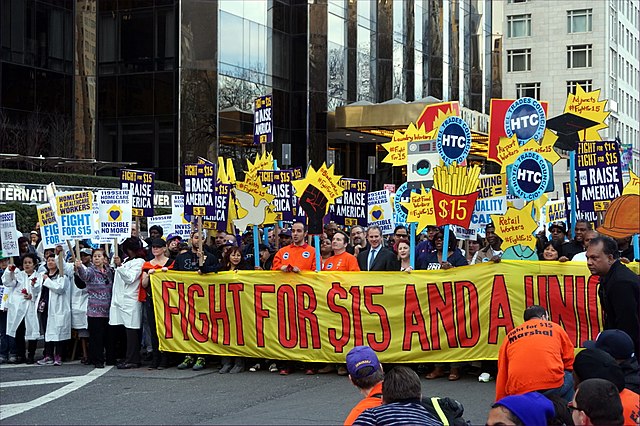A minimum wage is the lowest remuneration that employers can legally pay their employees—the price floor below which employees may not sell their labor. Most countries had introduced minimum wage legislation by the end of the 20th century. Because minimum wages increase the cost of labor, companies often try to avoid minimum wage laws by using gig workers, by moving labor to locations with lower or nonexistent minimum wages, or by automating job functions. Minimum wage policies can vary significantly between countries or even within a country, with different regions, sectors, or age groups having their own minimum wage rates. These variations are often influenced by factors such as the cost of living, regional economic conditions, and industry-specific factors.

Estimated minimum wage effects on employment from a meta-study of 64 other studies showed insignificant employment effect (both practically and statistically) from minimum-wage raises. The most precise estimates were heavily clustered at or near zero employment effects (elasticity = 0).
A 2010 study published in the Review of Economics and Statistics compared 288 pairs of contiguous U.S. counties with minimum wage differentials from 1990 to 2006 and found no adverse employment effects from a minimum wage increase. Contiguous counties with different minimum wages are in purple. All other counties are in white.
Protesters in New York City call for an increased minimum wage as part of the "Fight for $15" movement to require a US$15 per hour minimum wage, 2015
A price floor is a government- or group-imposed price control or limit on how low a price can be charged for a product, good, commodity, or service. It is one type of price support; other types include supply regulation and guarantee government purchase price. A price floor must be higher than the equilibrium price in order to be effective. The equilibrium price, commonly called the "market price", is the price where economic forces such as supply and demand are balanced and in the absence of external influences the (equilibrium) values of economic variables will not change, often described as the point at which quantity demanded and quantity supplied are equal. Governments use price floors to keep certain prices from going too low.
Protesters call for an increased legal minimum wage as part of the "Fight for $15" effort to require a $15 per hour minimum wage in 2015. A government-set minimum wage is a price floor on the price of labour.
A Boeing 707 at JFK airport in 1970. During the mid-1960s, airfares had a regulated price floor that made flying twice the cost of the 2010s, due to the ending of price controls in 1978.




